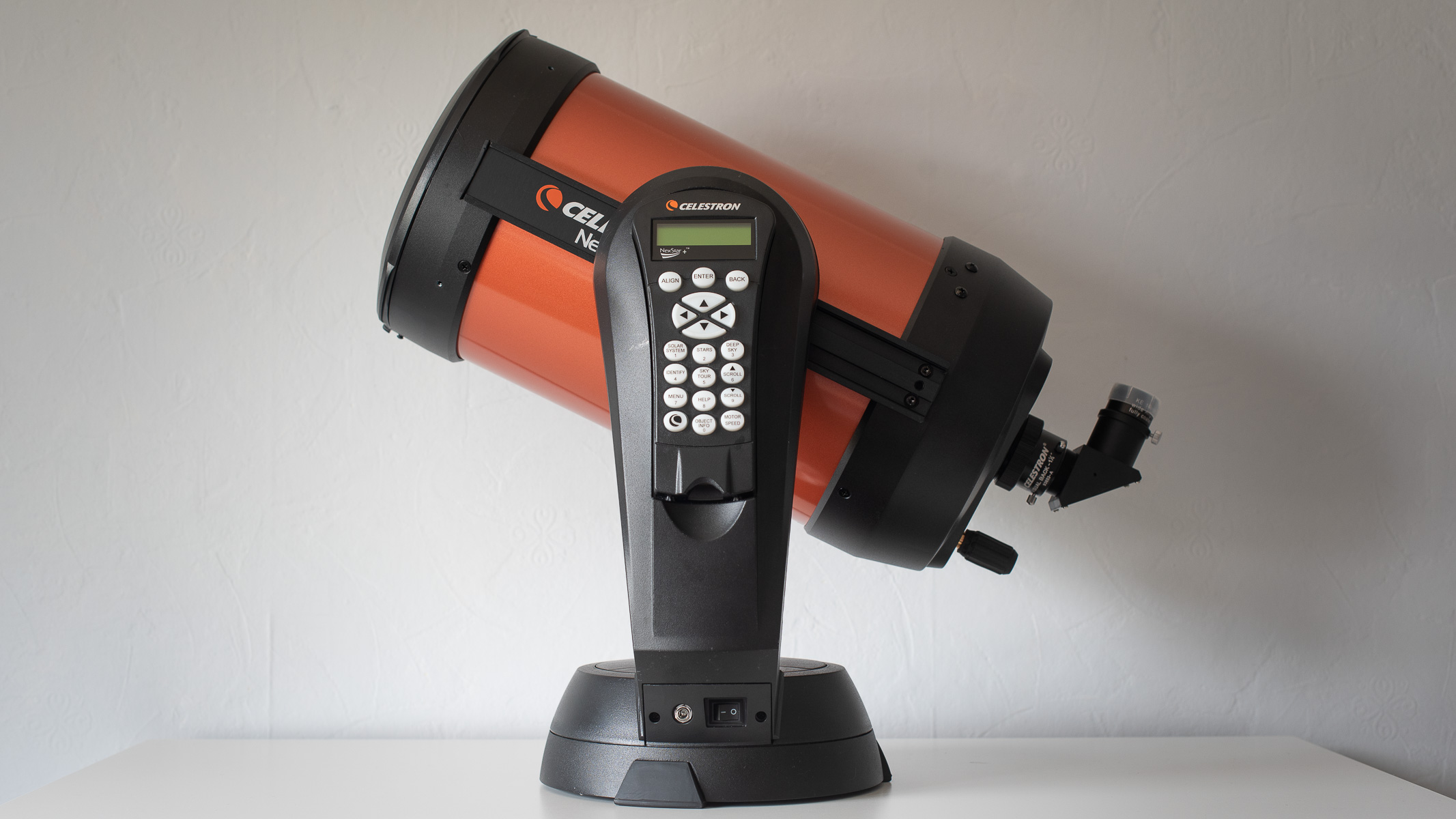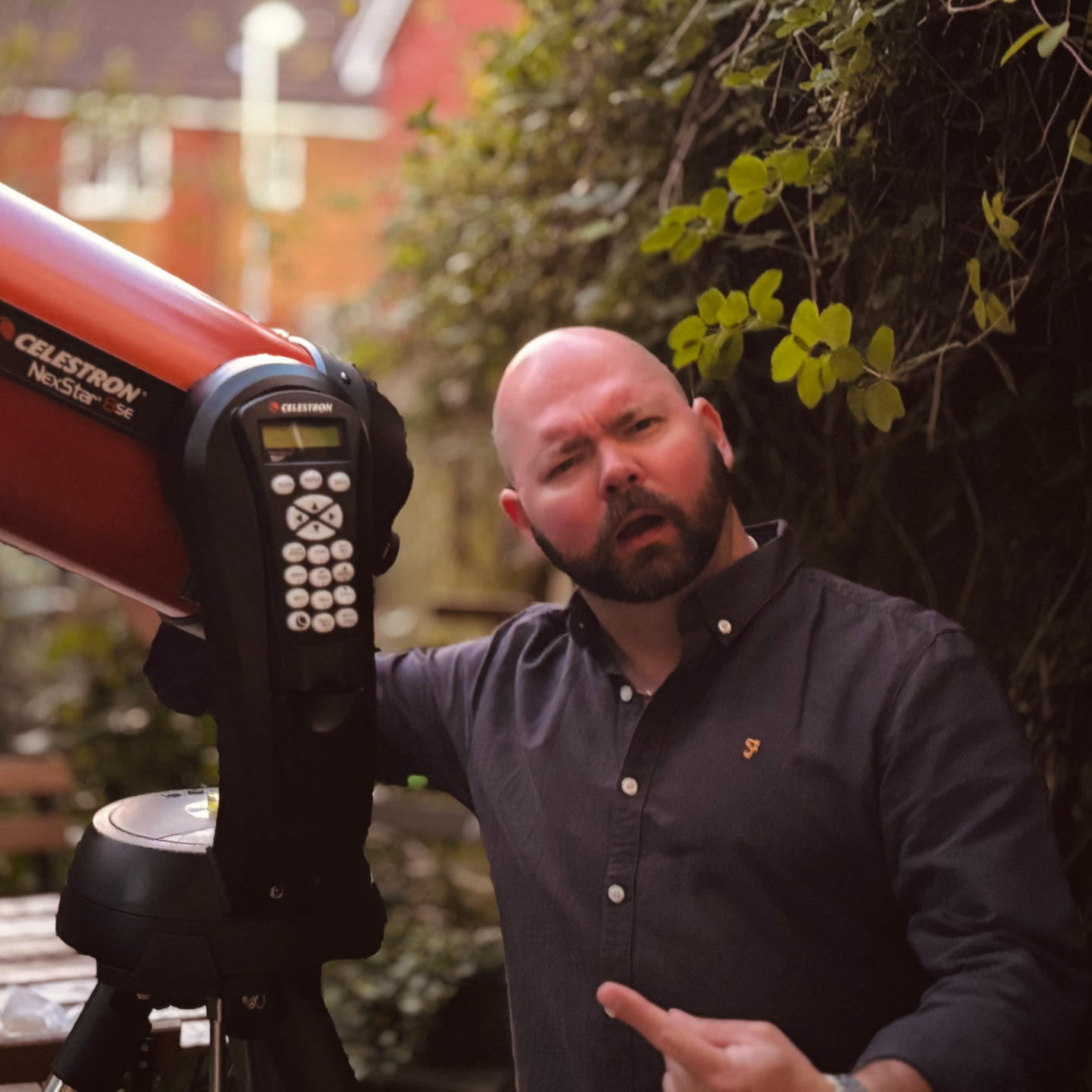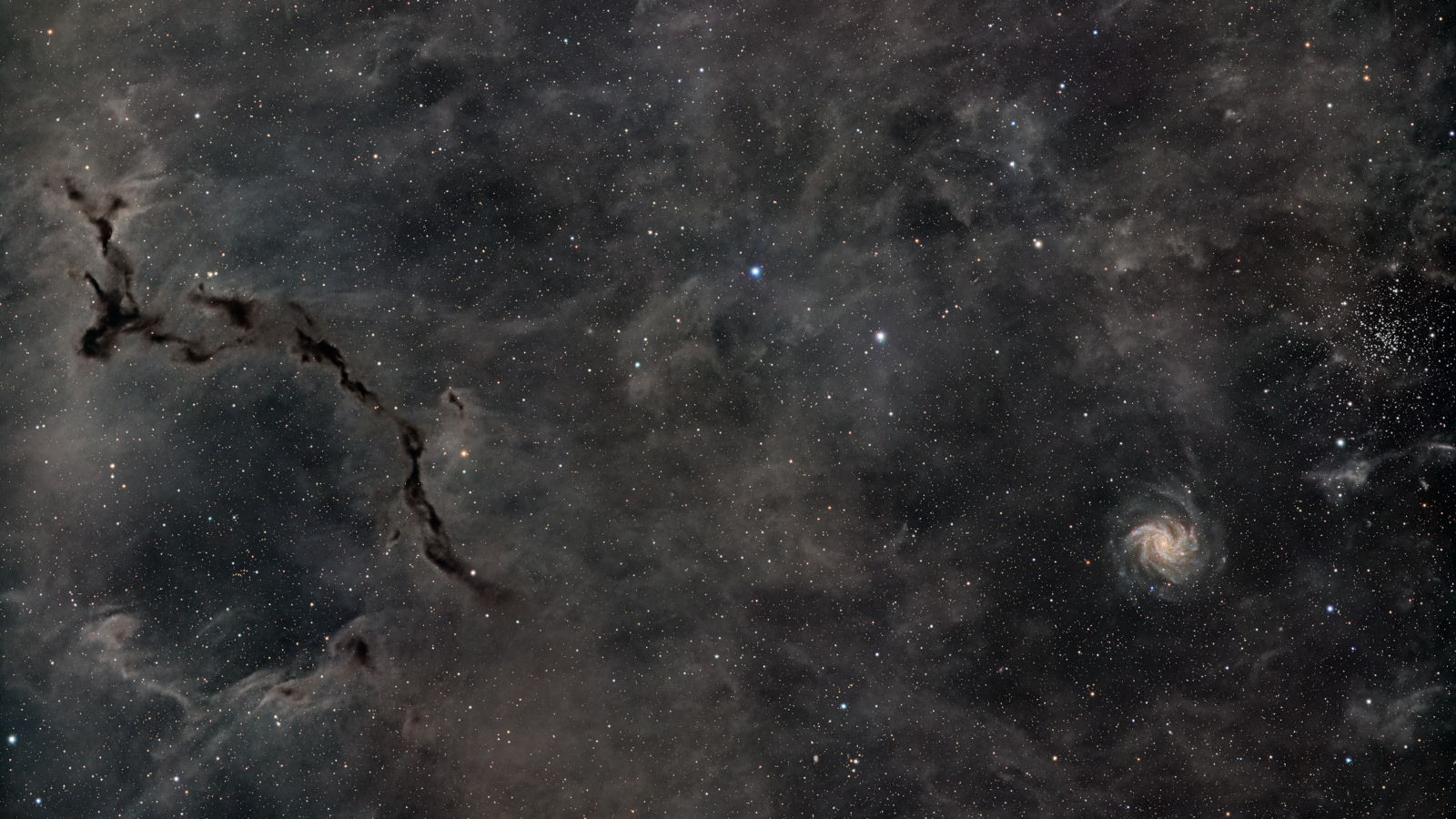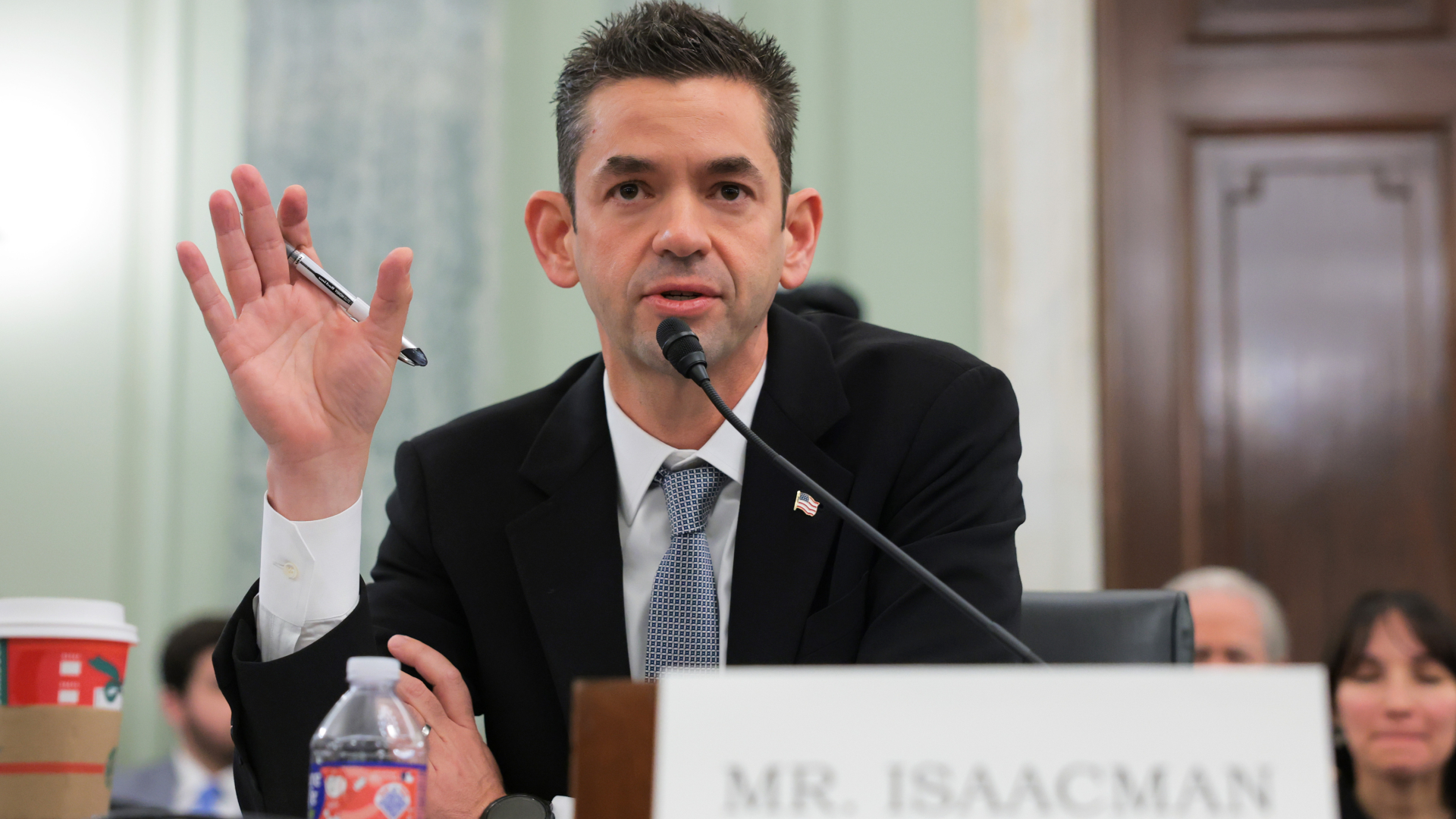Astrophotographer captures galactic fireworks near the Seahorse Nebula in eerie deep-space photo
10 supernova explosions have been seen brightening the Fireworks Galaxy over the past century.
Astrophotographer Greg Meyer has captured a spectacular image of the Fireworks Galaxy (NGC 6946) shining close to the dark shape of the Seahorse Nebula.
The majestic spiral arms of the Fireworks Galaxy can be found to the lower right of Meyer's cosmic vista, surrounded by the foreground clouds of a dusty molecular cloud located within the Milky Way. The Fireworks Galaxy's nickname stems from the 10 observable supernovas seen brightening its expanse over the past century; for comparison, our galaxy is only expected to manifest one or maybe two such events over the same period of time.
Lurking to the left of the Fireworks Galaxy is the star-forming region Barnard 150 — an enormous cloud of interstellar dust also known as the Seahorse Nebula, due to its striking resemblance to the tiny sea creature. The 'Ghost Bush' open star cluster is also visible to the upper right of the Fireworks galaxy, twinkling with the light of countless gravitationally bound stellar bodies.
Meyer chose to frame all three objects in a single shot to create a breathtaking deep space vista. "I don't usually shoot galaxies with a telescope of just 400mm, but showing it in perspective to other objects maybe makes it more interesting as a wider shot," said Meyer in an email to Space.com"
As is often the case with astrophotography, the celestial objects captured in Meyer's portrait aren't anywhere near as close to one another as they appear. For example, the Seahorse Nebula orbits within the Milky Way at a distance of 1,200 light-years from Earth, while the Ghost Bush open cluster lies beyond, an impressive 5,600 light-years from our Blue Marble. The Fireworks Galaxy meanwhile is a staggering 22 million light-years from our planet.

Want to see the Seahorse Nebula? The Celestron NexStar 8SE is ideal for beginners wanting quality, reliable and quick views of celestial objects. For a more in-depth look at our Celestron NexStar 8SE review.
The light that created this stunning cosmic vista was captured in the pristine skies above northern Arizona over the course of several nights in June earlier this year. Over 17 hours were spent imaging the deep sky objects with a Sky-Watcher Esprit 80mm telescope with a Player One Poseidon M pro astrophotography camera, using a range of filters and peripherals. The data was then post processed using Adobe editing software and Pixinsight.
Astrophotographers looking to upgrade their gear should read our guide to the best cameras for capturing the night sky in 2025. We also have a roundup of the top lenses for astrophotography if you're looking for new glass.
Breaking space news, the latest updates on rocket launches, skywatching events and more!
Editor's Note: If you would like to share your astrophotography with Space.com's readers, then please send your photo(s), comments, and your name and location to spacephotos@space.com.

Anthony Wood joined Space.com in April 2025 after contributing articles to outlets including IGN, New Atlas and Gizmodo. He has a passion for the night sky, science, Hideo Kojima, and human space exploration, and can’t wait for the day when astronauts once again set foot on the moon.
You must confirm your public display name before commenting
Please logout and then login again, you will then be prompted to enter your display name.

